Images: Hurricane Wilma - No lives lost in Cuba
No lives lost in Cuba
NOT one person
died in Cuba in the 10 days that Wilma was in the vicinity
of the island, informed the Headquarters for Cases of
Disaster attached to the National Defense
Council.
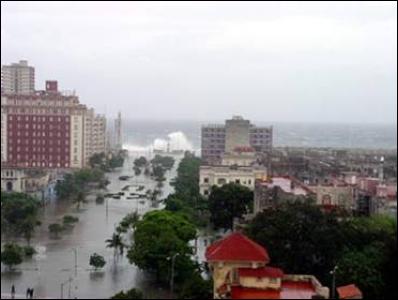
Simultaneously with Wilma – adds the report quoted by AIN – tropical storm Alpha was battering the eastern region of the country with torrential rain. In response, 1,140 civil entities acted to reduce the consequences of both atmospheric events.
A preliminary count estimates that 607,542 persons were evacuated throughout the country, of these 70,300 in shelters and more than 537,200 in the homes of families and neighbors.
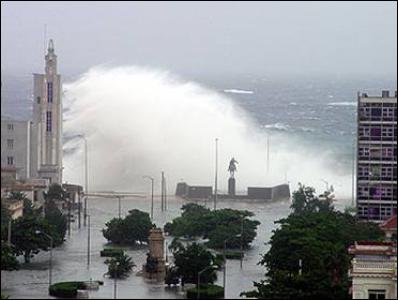
In the provinces from Pinar del Río to Sancti Spíritus more than 413,850 animals of various kinds were transported to areas of safety, including nearly 111,000 cows, 45,880 hogs, 23,550 sheep and 217,600 fowl.
More than 103,000 people were mobilized for Civil Defense measures; 1,325 shelters were activated, 591 of them in schools; 755 food preparation centers; and around 4,970 means of transportation.
Given its extended duration in waters close to Cuba, the hurricane’s effects lasted 10 days, causing ocean swells, heavy rain and winds.
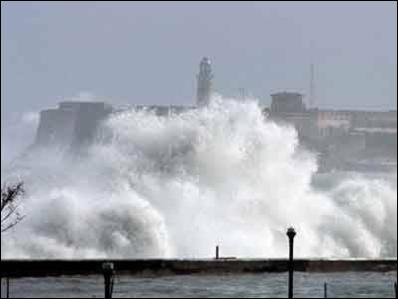
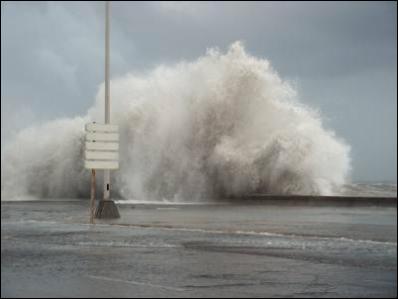
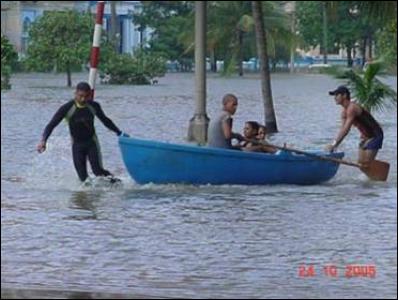

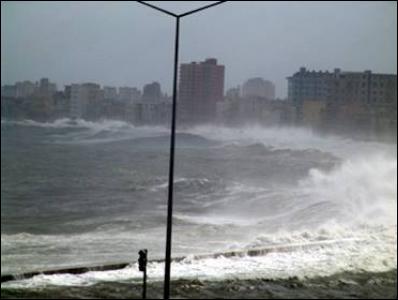
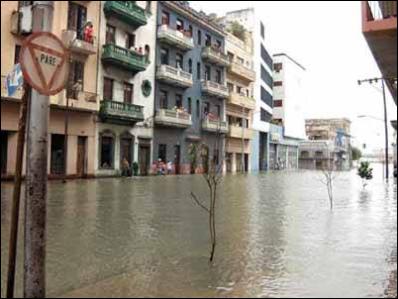

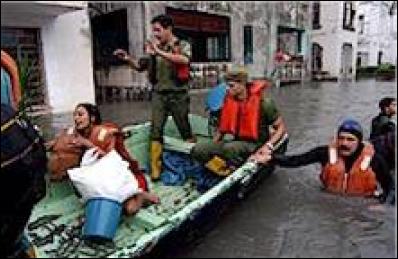
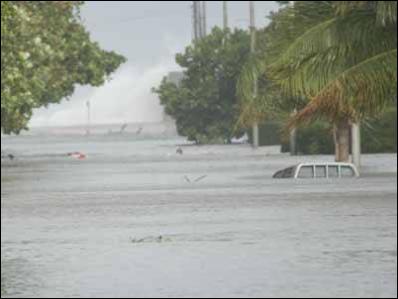
BY GABRIEL DAVALOS
SINCE dawn on Wednesday, October 26, engineers’ units of the Revolutionary Armed Forces (FAR), supported by brigades from several construction contingents, have been collecting debris and cleaning up Havana’s seafront highway and boardwalk, the Malecón.
Repair work was concentrated on 13 points between Manrique Street, in the Central Havana neighborhood, and Calzada in El Vedado. It also includes reestablishing a bridge that was affected in the same area.
Most of the damage is along northbound section of the Malecón, where the sea water lifted up asphalt and pieces of sidewalk and knocked down part of the wall.
The troops arrived at dawn to begin their mission. Second Lieutenant Eliécer Barbán Garcés, of a FAR engineers’ unit, began demolition and debris cleanup duties along with his soldiers at 8:00 a.m. in front of the Ameijeiras Hospital. "When we got here, we reviewed the area to organize our work and then began," he said.
The FAR engineers’ units, along with brigades from the Blas Roca, Raúl Roa and Compaña de Las Villas contingents, and forces from Construction Enterprise No. 5 of the Ministry of Construction, were planning to work 24 hours around the clock until the Malecón can be opened to traffic again.
TUNNEL WORK UNDERWAY
Almost 12 hours after works to drain sea water from the Línea tunnel, FAR troops, supported by the National Institute of Hydraulic Resources and the Ministry of Construction, had extracted more than 6,000 cubic meters of water from a total of 28,000.
Extraction work on the Fifth Avenue tunnel began a few hours later. It was decided to prioritize Línea because the Malecón was still closed to traffic, and opening up Línea would relieve some of the traffic congestion between the municipalities of Playa and Plaza de la Revolución, according to Brigade General Miguel Otero Alvarez, MINFAR command chief.
The capacity for extraction in the Línea area is 1,500 cubic meters per hour, with 11 motorized pumps chugging away fulltime, while 500 cubic meters per hour were being pumped out of the Fifth Avenue tunnel.
It was not certain exactly when both tunnels would be empty. Forces involved in the work, dubbed Operation Aurora, have proposed completing it in much less time than that required after the Storm of the Century in 1993.
SURMAILIS Victores doesn’t halt in her task of clearing water and mud from her modest home in the Vedado neighborhood, one of those most hit by sea flooding after the passing of Hurricane Wilma.
The water entered her apartment to a height of one meter and she has lost everything: refrigerator, television, stove, mattresses, beds, crockery and other objects.
"I feel like crying, screaming, running away, I don’t even know what to tell you, we’ve lost everything," she told Granma International.
Surmailis is 29 and has one daughter, Jennifer, aged six, who was being looked after by relatives. She lives with her mother, brothers and sisters and a nephew, a total of nine people.
Elena, Surmailis’ mother, has tears in her eyes while she listens to her daughter and comments: "I feel very depressed, this hurricane was terrible, we lost everything."
During the hurricane they stayed in a relative’s home, only Surmailis and her husband stayed behind to look after the house. "The water came in up to here," she explained, pointing to her waist, "We’ve never seen anything like it, even in the storm of the century in 1993."
While she continues sweeping out the water with a broom, Surmailis said that for breakfast the local bodega (the outlet for basic subsidized food items) was giving out a pack of food per family with water, soft
drinks, sweet crackers, bread, hot dogs and candies.
Two blocks above, Rafael Socorro had put all his furniture and household effects out in the street in order to clean the house. "The beds and some of the furniture got wet; luckily I’d safeguarded the fridge, stove and television in apartments upstairs. "
Rafael, who works in an agricultural market, stayed at home during the hurricane while his wife and 5-month sons Abrahan and Abel were put up by neighbors.
"A commission of architects has already been by to assess the damage," he explained and added: "We are waiting for a visit from a commission from the Party and People's Power to help with the repairs that we have to make."
In the house next door Marieneida Zamora shows us her furniture and domestic appliances damaged by the sea: "We have lost everything, we didn’t have time to get anything out, it was terrible."
Meanwhile her husband Ciro O’Farrill had accumulated a mountain of rubble outside the door, given that the water penetrated one kilometer into this area, dragging everything in its wake.
In the same street a bit farther up the road, a People's Power truck is giving out lunches per family nucleus: sautéed rice with bread and a soft drink for residents in the area who had been without water, light or power for more than 48 hours.
House by house, sea water that had penetrated the most low-lying areas was being pumped out of basements, like in a building on Calzada and I, where 50 families live. "We are pumping water out of the cistern that was contaminated by the sea which entered up to one meter in height," explained Leandro, a worker with the Communications Company.
On Calzada Street some children were playing around the jet of water being pumped out of the basement of a house.
Roberto García, president of the Neighbors Council of a building on J Street and Calzada, shows us his still flooded garage. "The water came in to a height of more than three meters, we’re waiting for them to come and pump it out; luckily, all the cars had been taken to higher areas." And he affirmed that the water had never entered so high during a hurricane.
The Central Havana municipality was likewise hard hit by Wilma, the sea burst the wall of one section of the Malecón and flooded in to a height of more than two meters.
María Salcedo, aged 59, regards her destroyed home and comments: "In all the 50 years that I have lived here, I’ve never seen anything like it. The sea broke everything, door and windows, all the furniture, the fridge, the stove, everything. We didn’t have time to get things out, we went upstairs to the house of some neighbors who live on an upper floor."
Leaning on the broom with which she was tirelessly pushing out water, sand and mud, she said: "We are waiting for a commission to assess the damage, we are waiting for government aid to replace and arrange things."
Meanwhile, on one corner of San Lázaro and Virtudes, Jésus Hozman, an Electricity union worker, is "pumping out the water remaining in the basements and reviewing equipment because, in this area, the cables are underground and we have to control everything properly before we can turn on the power."
On the corner of Maelcón and Perseverancia, 49-year-old Miguel Remigio has just received the bag of food given out for breakfast. "That’s a great help because we haven’t had any light, gas or water for more than 48 hours. I have lived here all my life and I’ve never seen a hurricane with so much force or the sea so angry."
The Malecón seawall was unable to resist the sea after the passing of Wilma. Sitting on the wall torn down by waves in the middle of the street, various neighbors were watching the teams of workers collecting all the rubble.
ELECTRICITY NEARLY 90% REESTABLISHED
As Jorge Luis Coteron, director of security and inspection at the National Electrical Union, informed Granma International, electricity services were 90% restored in City of Havana 48 hours after Hurricane Wilma had passed.
Coteron added that the situation in four capital municipalities was more complicated as they were the most badly damaged by sea flooding: Playa, Plaza de la Revolución, Central Havana and Old Havana, where they hope to be able to restore the service on Friday (28).
The official explained that in the capital municipalities of Central and Old Havana, where the cables are underground, it was hoped to restore the service by Wednesday 26.
"From Tuesday when the sea began to retreat workers began to pump the water out of basements, afterwards the flooded places have to dry out and we have to verify all the protectors before the service can be restored," he explained.
In the low-lying parts of Playa and Plaza de la Revolución the service will be restored between Thursday and Friday, Coteron explained, because they were places very badly damaged by sea penetration.
"The water flooded many garages and basements in those municipalities, we have to wait until they have drained before beginning to check the state of all the meters and other cables in order to restore the electricity service," the director confirmed, in relation to the security of those neighbors.
Coteron said that in the western province of Pinar del Río, also hard hit by Wilma, "Today, Tuesday (25), 85% of the service has been restored." However, he added that in certain isolated areas where the repairs are more difficult, reestablishing the service will take around 48 hours longer.
He concluded that no problems had been recorded and the entire electricity service had been reestablished in the other provinces that suffered the lashing of Hurricane Wilma: the Isle of Youth, Cienfuegos, Villa Clara and Sancti Spíritus.
Meanwhile, in Habana province, neighboring the capital, electricity supplies were reestablished Tuesday night in its 19 municipalities, according to the director of the Basic Electricity Organization, Edel Gómez, who clarified that only 188 reports of interruptions in specific places had to be solved.


 UN News: Healing Page By Page In Earthquake-affected Türkiye
UN News: Healing Page By Page In Earthquake-affected Türkiye Save The Children: Rate Of Attacks On Healthcare in Gaza Higher Than In Any Other Conflict Since 2018
Save The Children: Rate Of Attacks On Healthcare in Gaza Higher Than In Any Other Conflict Since 2018 UN News: Green Light For New Cholera Vaccine, Ukraine Attacks Condemned, Action Against Racism
UN News: Green Light For New Cholera Vaccine, Ukraine Attacks Condemned, Action Against Racism Laureus: Grand Slam Champion Garbiñe Muguruza Announces Retirement Ahead Of Laureus World Sports Awards
Laureus: Grand Slam Champion Garbiñe Muguruza Announces Retirement Ahead Of Laureus World Sports Awards Carbon Market Watch: Going For Green - Is The Paris Olympics Winning The Race Against The Climate Clock?
Carbon Market Watch: Going For Green - Is The Paris Olympics Winning The Race Against The Climate Clock? New Zealand Defence Force: NZDF Working With Pacific Neighbours To Support Solomon Islands Election
New Zealand Defence Force: NZDF Working With Pacific Neighbours To Support Solomon Islands Election